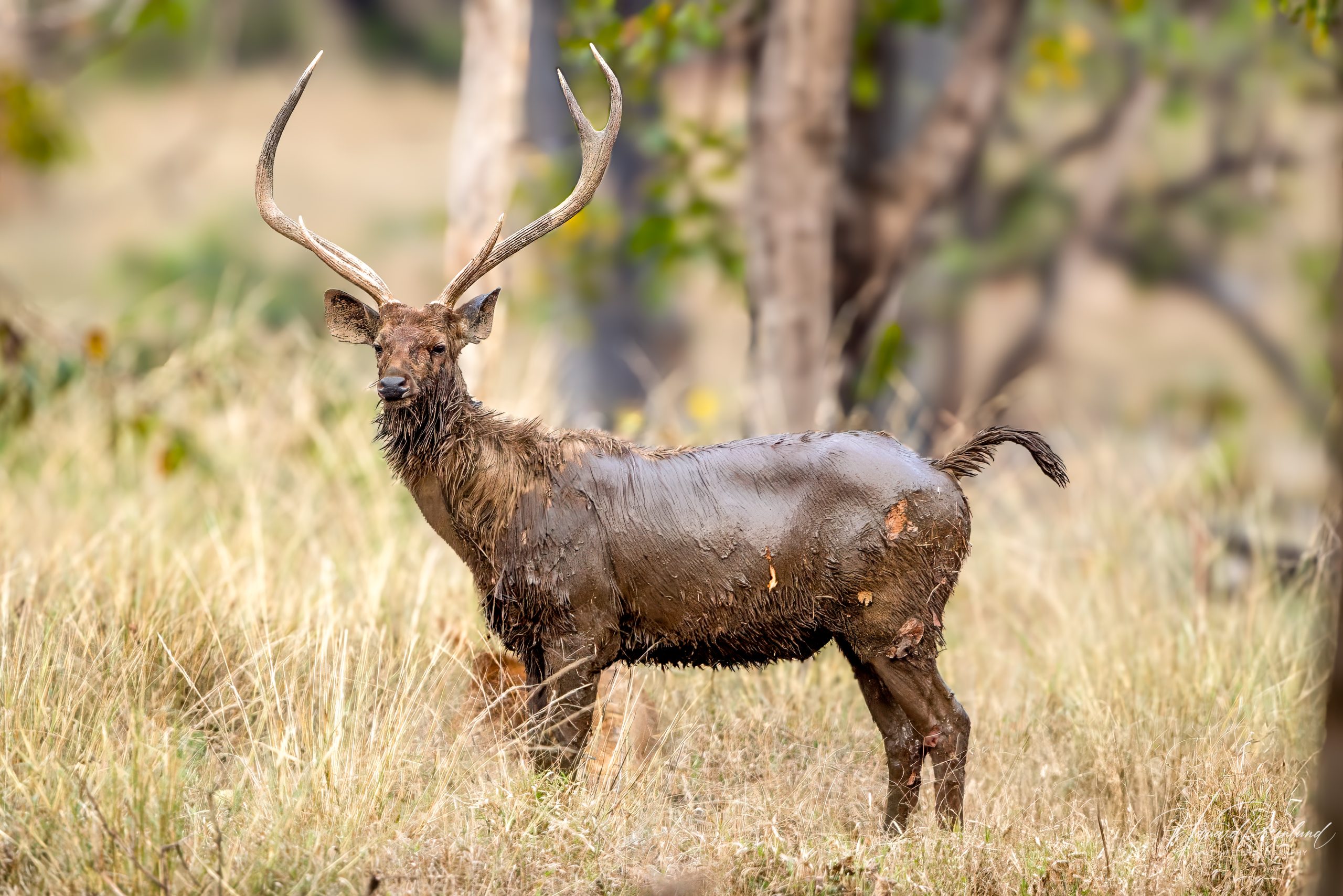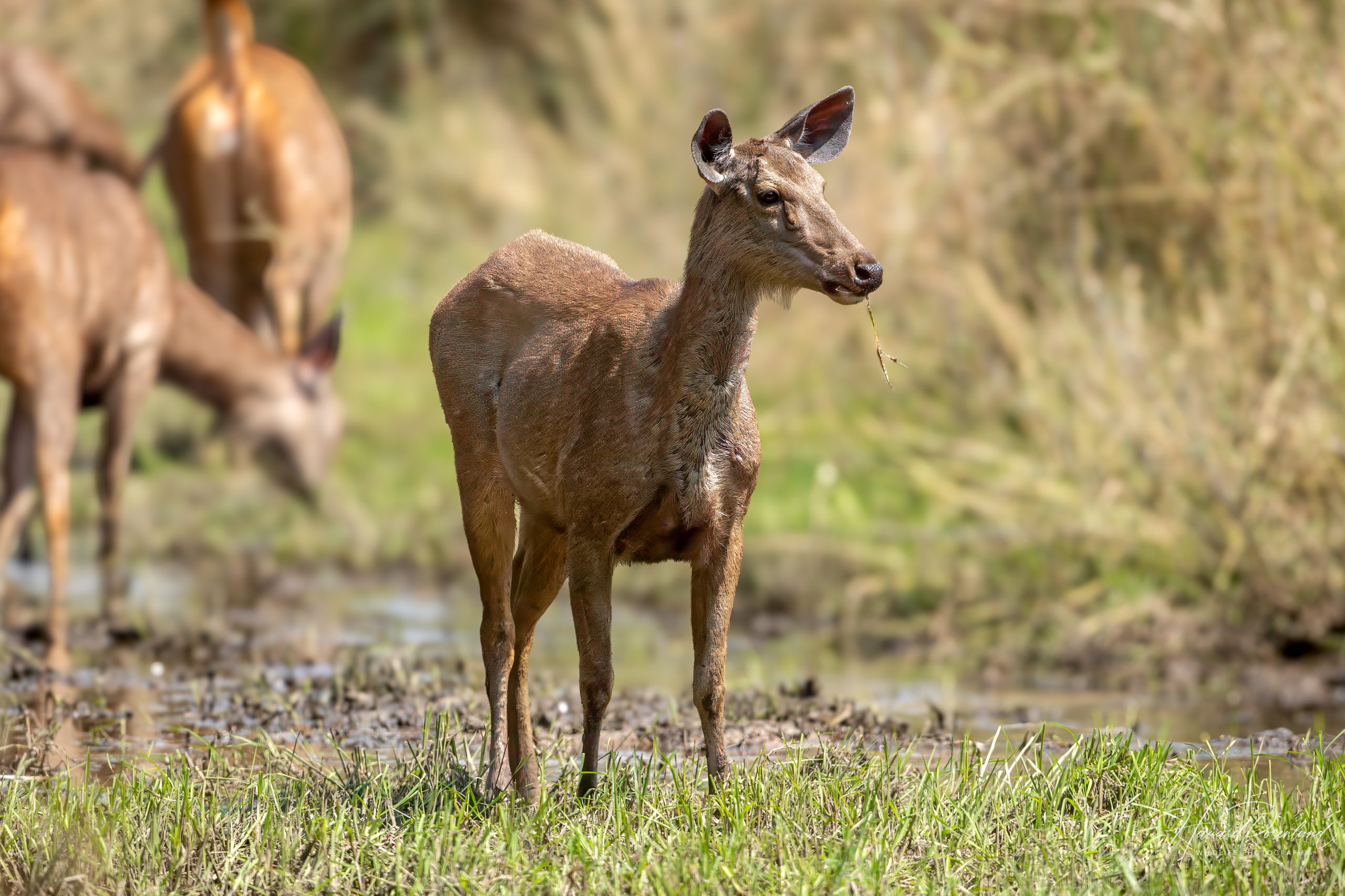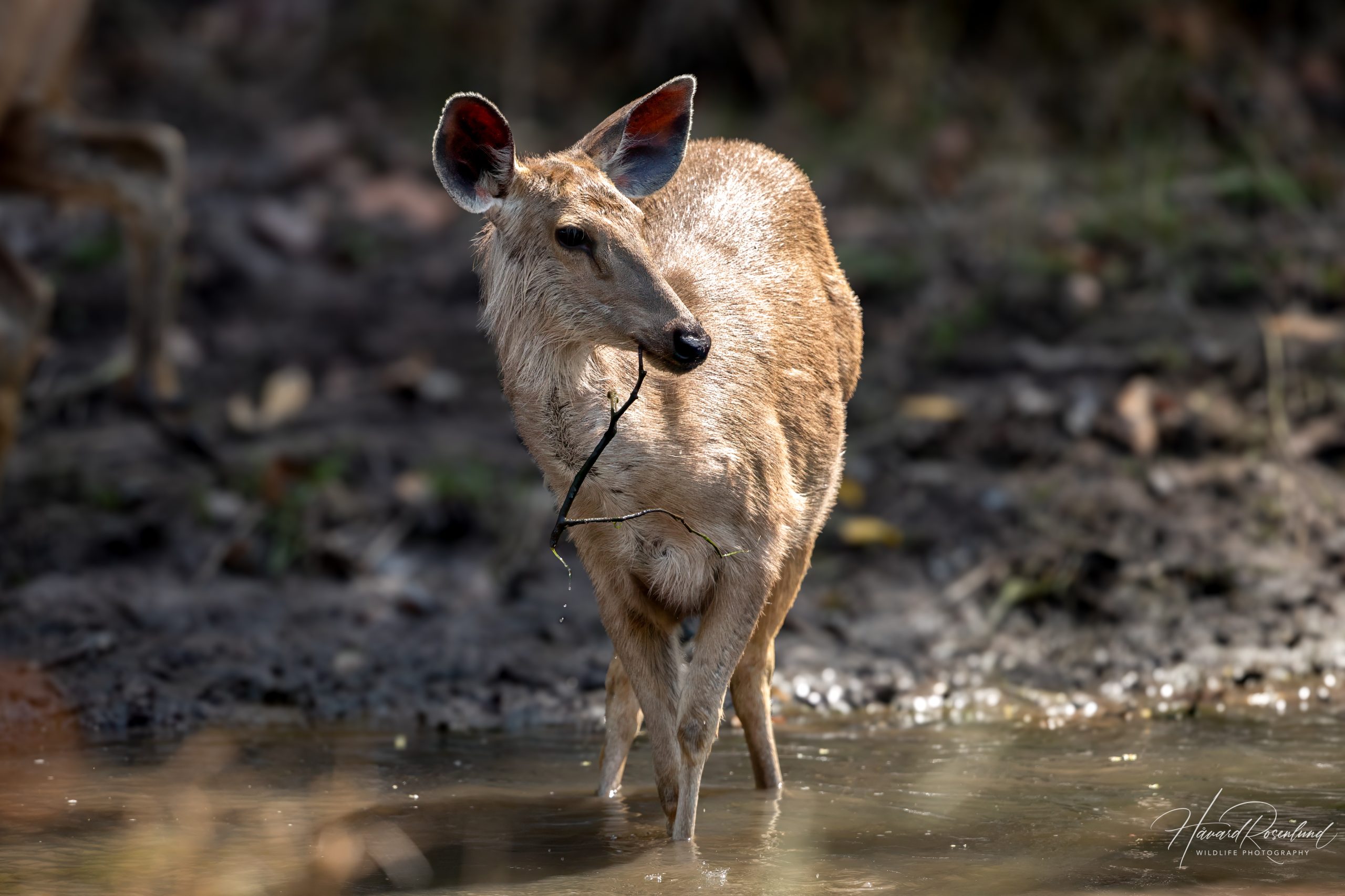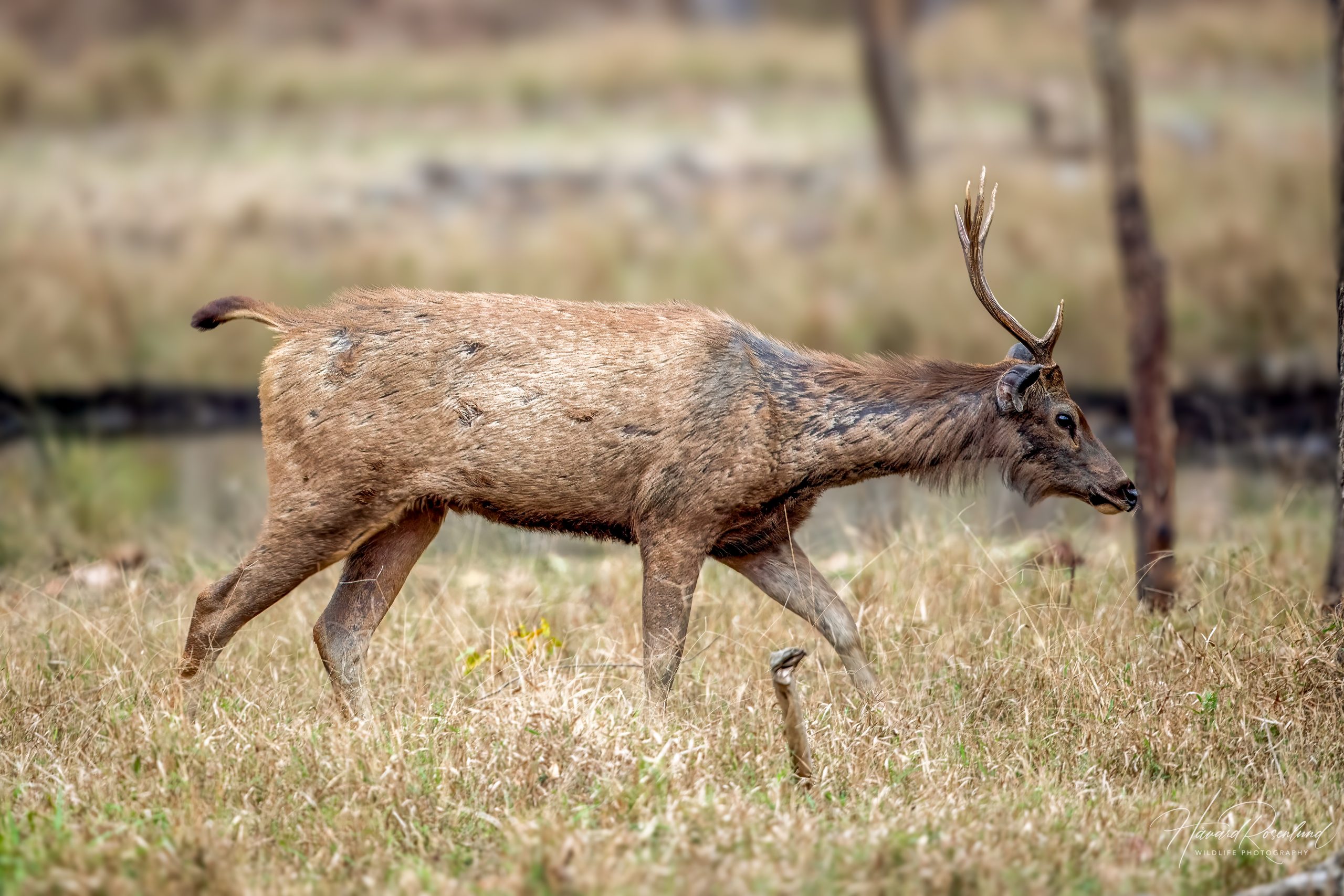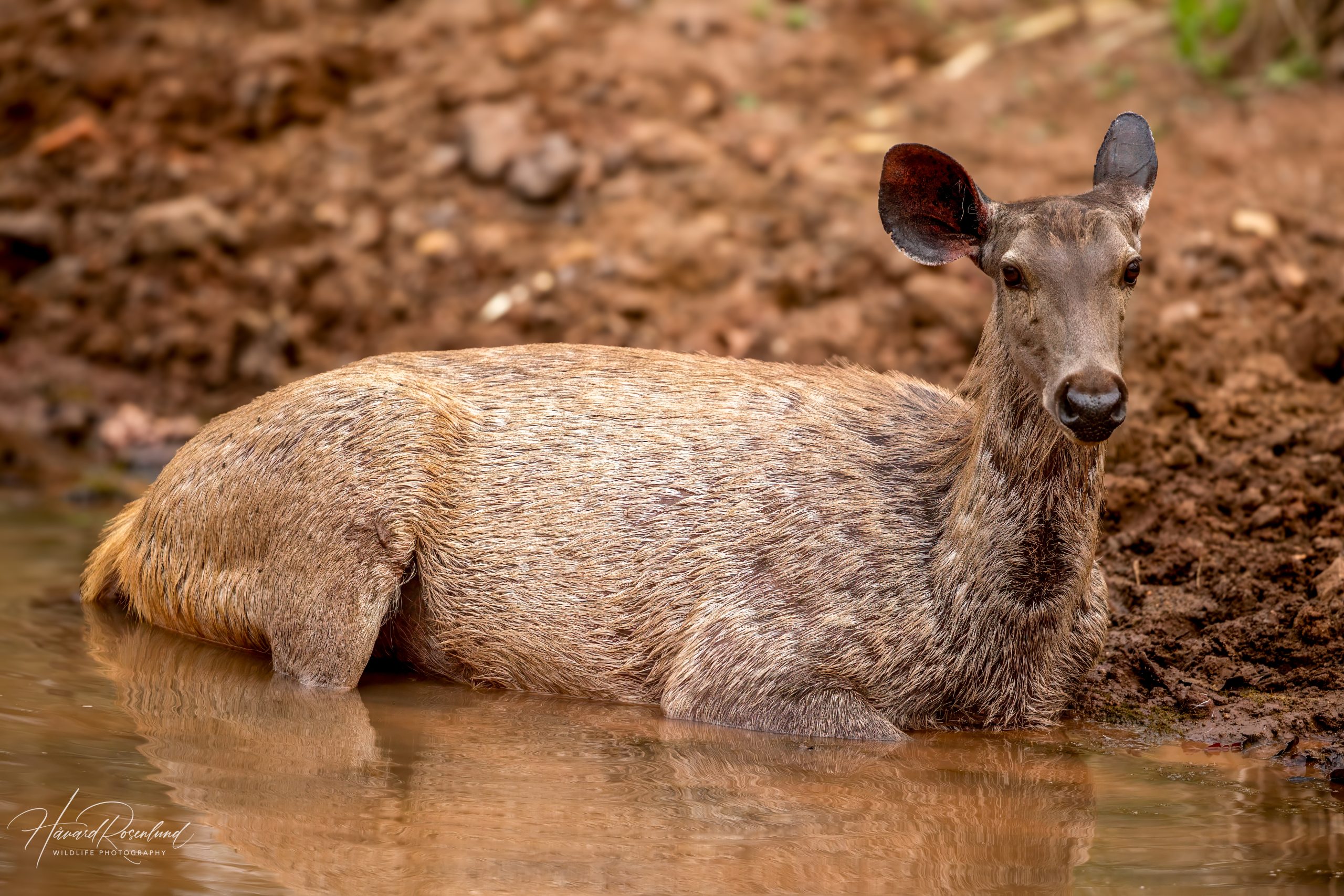Description
The sambar (Rusa unicolor) is a large deer native to the Indian subcontinent, southern China, and Southeast Asia. It also extends into Taiwan and the Malaysian peninsula, occupying a wide range of habitats from dense forests to open plains. Adult sambar can reach a height of 102-160 cm (40-63 inches) at the shoulder, with males weighing between 225-320 kg (495-705 lbs), and females slightly smaller at 150-230 kg (331-507 lbs). Sambar are characterized by their dark brown to greyish-brown coat, which is rough and shaggy. Males feature a mane on their necks and have impressive three-tined antlers that can span up to 110 cm (43 inches). The antlers are shed annually, and new antlers are typically grown during the monsoon season. This species differs from other deer through its solid build, longer legs, and larger size compared to the closely related Javan rusa (Rusa timorensis) and Philippine deer (Rusa marianna).
Diet & habitat
Sambar deer are highly adaptable and occupy a variety of habitats, including tropical rainforests, mixed forests, savannas, and even mountainous regions. They are primarily browsers, feeding on a diverse diet of leaves, grasses, fruits, and tender shoots. They are known to consume herbs and aquatic vegetation as well. Sambar exhibit a distinctive feeding behavior where they often stand on their hind legs to reach high branches, a method not commonly observed in other deer species. This feeding strategy allows them to access food sources beyond the reach of ground-level grazing.
Behavior
Sambar deer are generally solitary animals, though they may form small groups, particularly females with their offspring. Males are typically more solitary, except during the rutting season when they seek out females for mating. Sambar are crepuscular, being most active during the early morning and late evening hours. They are excellent swimmers and often take to water bodies to escape predators or to cool off. When alarmed, they produce a loud, repetitive honking call to alert other deer of danger. This vocalization is a key behavior that distinguishes them from many other deer species.
Reproduction
Breeding is influenced by geographical location, but it generally peaks in the cooler months. During the rut, males become highly territorial and engage in displays of dominance, which may include antler wrestling. The gestation period for sambar is about 8 months, and typically a single fawn is born. Newborns are spotted at birth, a pattern that fades as they mature. Fawns stay with their mothers for several months and are weaned by the age of 6 months. Sambar females exhibit strong maternal instincts, aggressively protecting their young from potential threats. The life expectancy of sambar deer in the wild ranges from 12 to 16 years, though individuals in captivity may live longer.
Introduced populations
Sambar deer have been introduced to various regions outside their native range, including Australia, New Zealand, and the United States, primarily for hunting and sport. In these new environments, they have adapted well but have also posed significant ecological challenges. In Australia, for instance, sambar have become prolific in forested regions, leading to overgrazing and competition with native herbivores. Their introduction has altered plant communities and affected the regeneration of native vegetation. In the United States, particularly in Florida, introduced populations have impacted local ecosystems and agricultural lands, often leading to management challenges.
Status
The sambar is currently classified as vulnerable on the IUCN Red List due to habitat loss, hunting, and poaching. In many parts of their range, sambar populations are in decline, primarily driven by deforestation and human encroachment. Conservation efforts are in place in several countries to protect their habitats and regulate hunting. However, the survival of the sambar deer relies heavily on effective management and protection of their natural habitats and continued enforcement of anti-poaching laws.




